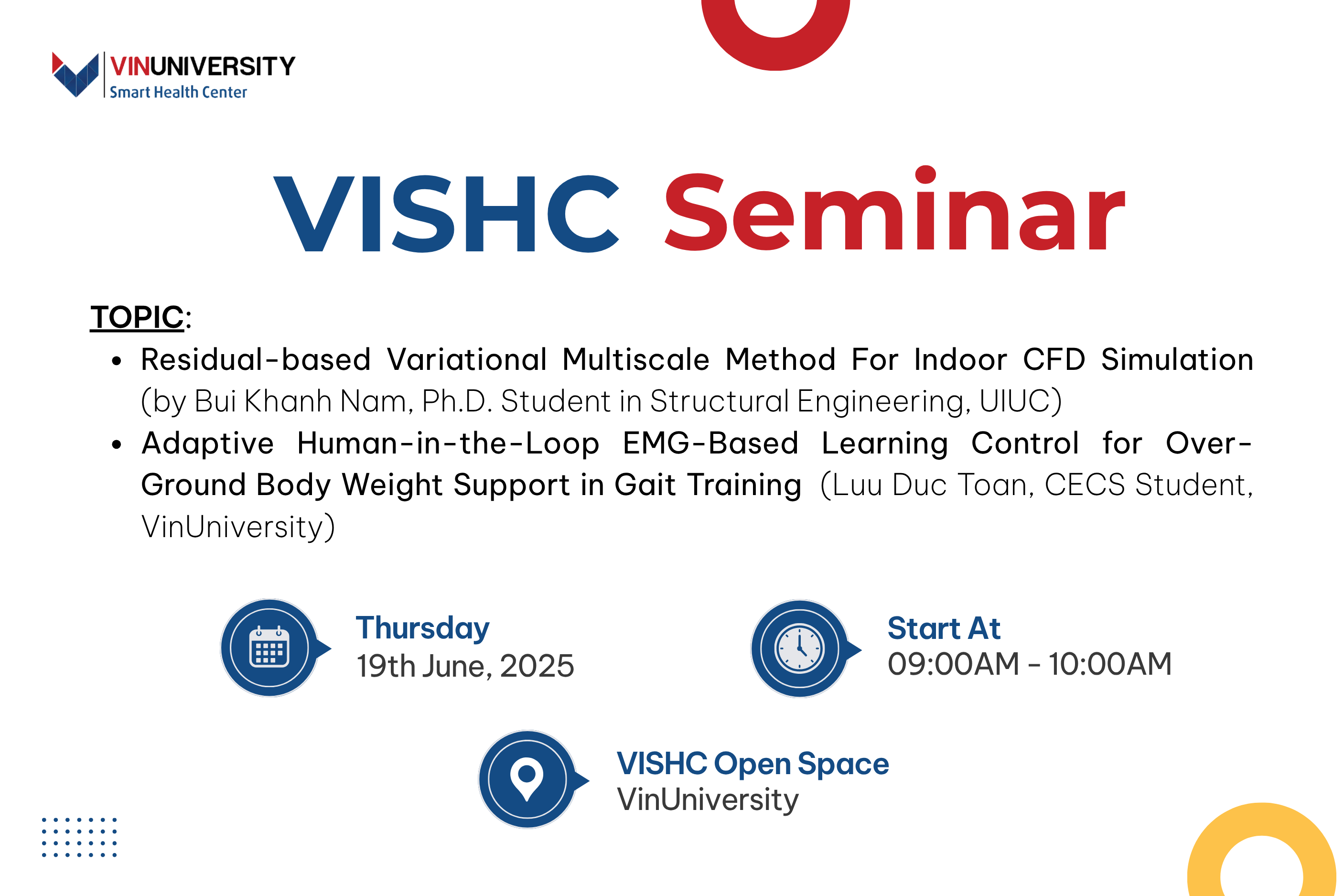[VISHC SEMINAR] FROM SMART GAIT TRAINING TO INDOOR AIRFLOW SIMULATION

📅 Date: Thursday, June 19, 9 AM – 10 AM (Hanoi, GMT +7)
🛎 Format: Offline
📍 Venue: VinUniversity, VISHC Open Space
📣 Topic:
1️⃣ RESIDUAL-BASED VARIATIONAL MULTISCALE METHOD FOR INDOOR CFD SIMULATION
📌 Speaker: Bui Khanh Nam, 2nd year Ph.D. Student in Structural Engineering at UIUC
💡 Abstract: We introduce a stabilized finite-element framework for rapid indoor CFD based on a residual-based variational multiscale (RBVMS) formulation. Discretizing the incompressible Navier–Stokes equations with equal-order P1–P1 elements, our RBVMS uses additive decomposition and a fine-scale residual approximation to yield a stable coarse-scale form that meets the inf–sup condition. We extend this stabilization to convection–diffusion for temperature and passive/reactive scalars, supporting a three-stage pipeline: (1) fluid flow, (2) thermal transport, and (3) scalar transport (e.g., pathogen concentration). To overcome CAD-to-mesh overhead, we propose an ML-accelerated photogrammetry workflow with immersogeometric analysis on point clouds, eliminating manual mesh prep. Benchmarks on airflow, thermal comfort, and pathogen dispersion confirm accurate, robust results with minimal setup—enabling real-time HVAC and air-quality assessment.
2️⃣ ADAPTIVE HUMAN-IN-THE-LOOP EMG-BASED LEARNING CONTROL FOR OVER-GROUND BODY WEIGHT SUPPORT IN GAIT TRAINING
📌 Speaker: Luu Duc Toan, CECS Student at VinUniversity
💡 Abstract: This work presents an adaptive human-in-the-loop control framework for over-ground body weight support systems (BWSSs) in gait training, driven by electromyography (EMG) signals and learning-based control. The approach integrates real-time EMG feedback with a continuously updated model-learning controller to deliver personalized assistance by adapting to the user’s neuromuscular dynamics and gait intent. EMG signals from lower-limb muscles are used to infer motion intent and adjust the BWSS velocity accordingly. Simulation results with healthy subjects demonstrate enhanced tracking accuracy and user engagement, highlighting the potential of EMG-driven learning control for intelligent, responsive, and user-centered robotic rehabilitation.